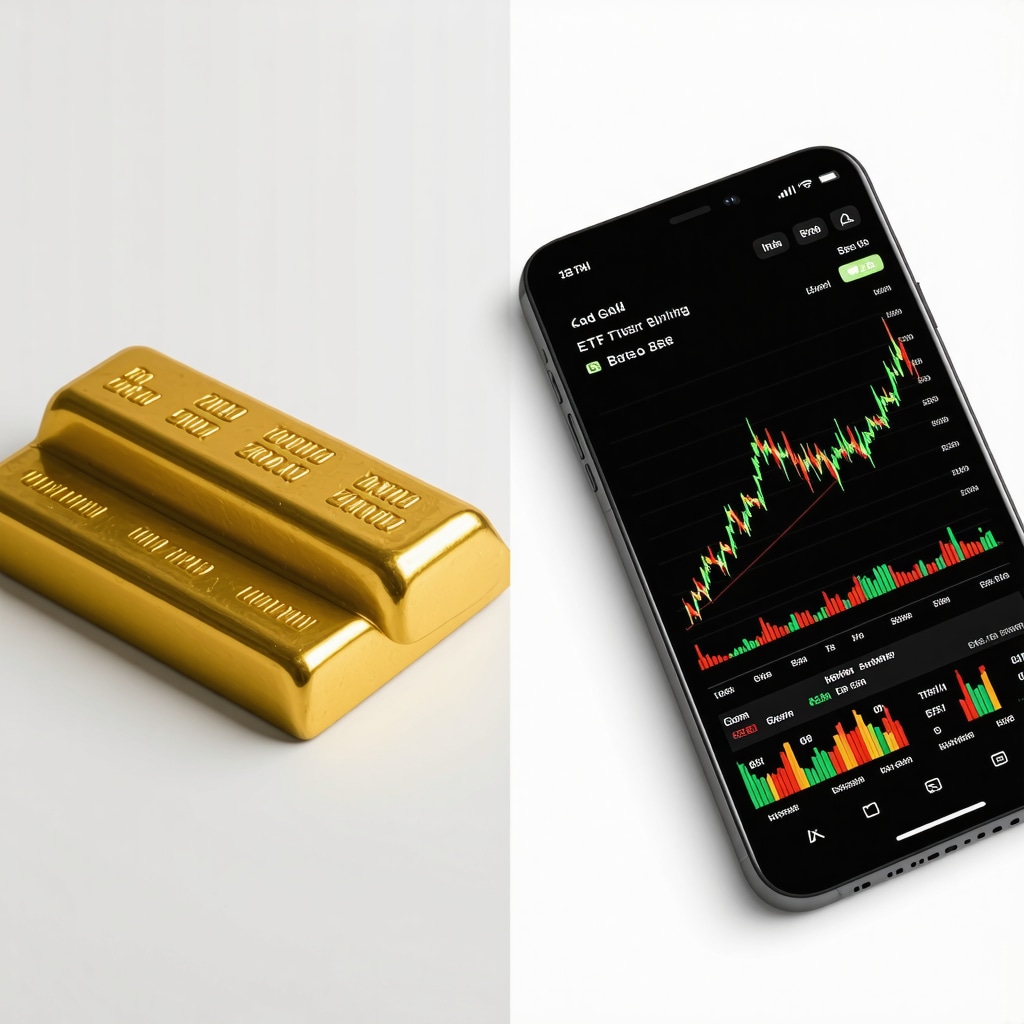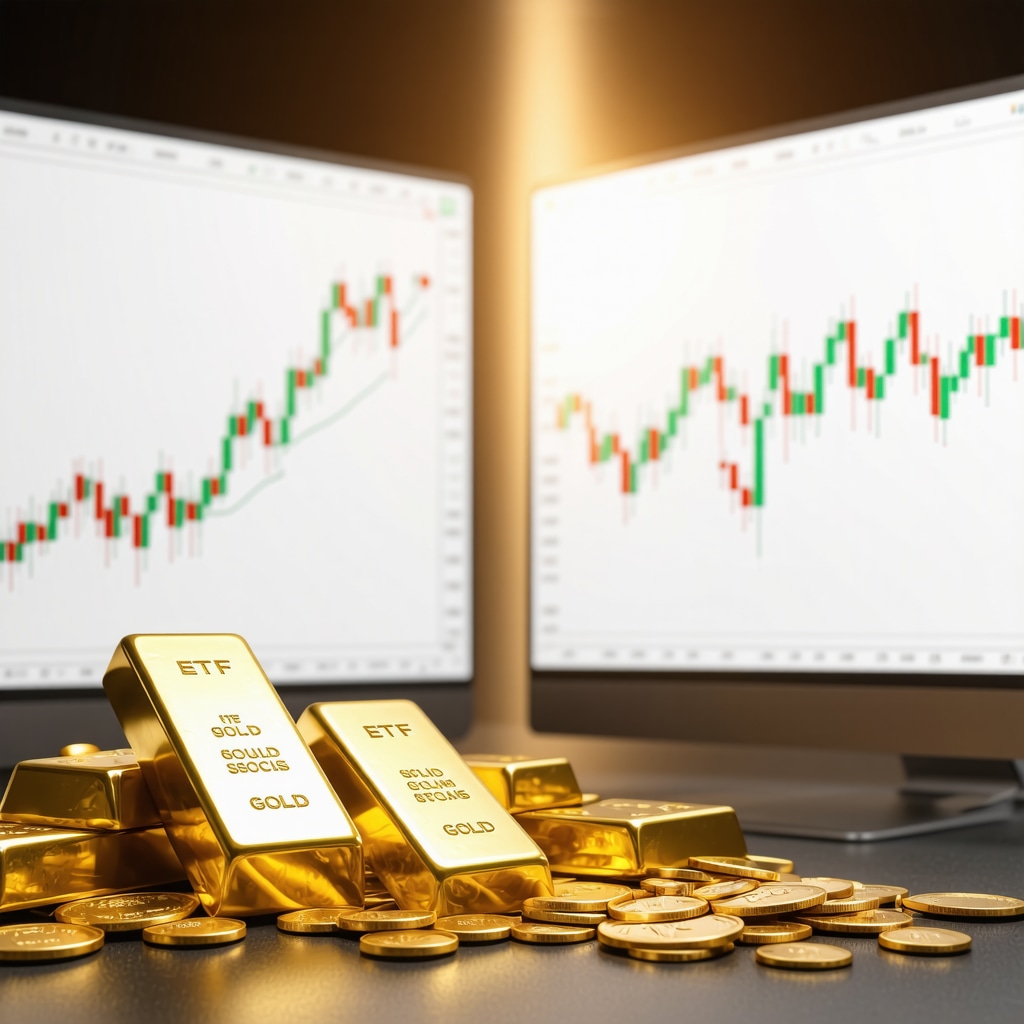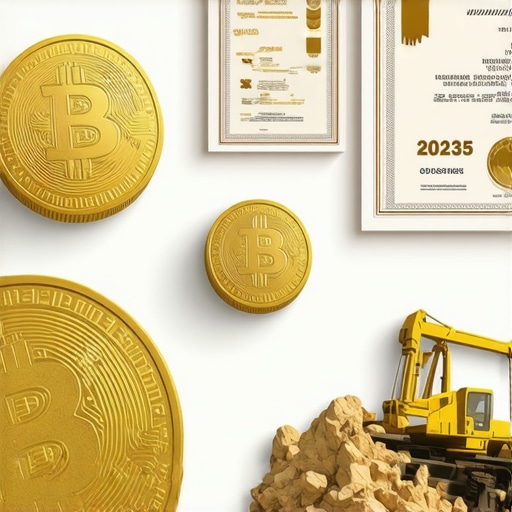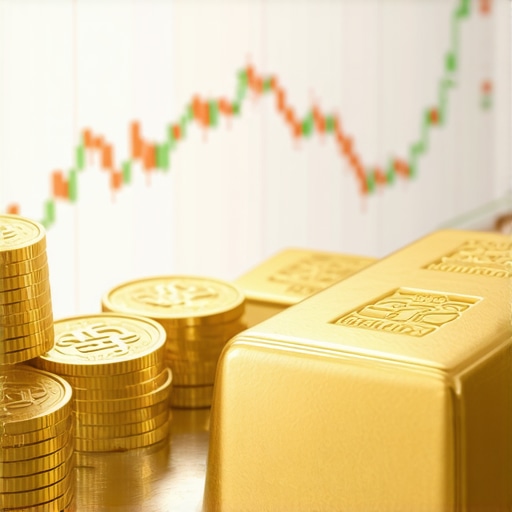Why the Glittering Debate Between Physical Gold and Gold ETFs Just Got Personal
Imagine walking into a treasure vault—glimmering bars stacked to the ceiling, each a testament to timeless wealth. Now, contrast that with a few clicks on your smartphone, buying a slice of gold without ever seeing it. Welcome to the curious crossroads where physical gold meets gold ETFs. Which one beckons your inner investor? Well, buckle up; this isn’t just about shiny metals but about how you want to dance with your money.
The Tangible Charm of Physical Gold: Holding History in Your Hands
There’s something profoundly reassuring about owning physical gold. It’s an ancient security blanket against economic uncertainty. Whether it’s bars or coins, physical gold appeals to the sentimentalist and the pragmatist alike. You get the visceral joy of possession and the hedge against inflation that has stood the test of time. But beware—the responsibilities of safe storage, insurance, and liquidity can sometimes dull the sparkle.
Gold ETFs: The Modern Alchemist’s Dream
Enter Gold Exchange-Traded Funds (ETFs), the financial wizardry that turns gold into a liquid asset. With ETFs, you enjoy the price movements of gold without worrying about storage or authenticity. They’re easy to trade, accessible through most brokerage accounts, and often come with lower transaction costs. But, as with all magic, there’s a catch—ETFs are subject to market risks, management fees, and the less tangible nature of ownership.
So, is it better to clutch a coin or click a ticker?
The answer, dear reader, depends on your investment style, risk tolerance, and financial goals. If you cherish control and the physical assurance of holding gold, the bullion route might be your match. If you’re a nimble investor who values liquidity and convenience, ETFs could be your golden ticket.
For those curious about securing your physical gold safely, this guide dives deep into trustworthy methods. Meanwhile, if ETFs spark your interest, exploring how to choose the best ETF might give you an edge.
Investing in gold isn’t just about numbers; it’s about storytelling, legacy, and strategy. As financial expert James Rickards eloquently puts it in this insightful CNBC interview, “Gold is the only real money, and everything else is credit.” Food for thought, isn’t it?
Why not share your golden thoughts or experiences in the comments below? Whether you’re a seasoned prospector or a curious newcomer, your voice adds sparkle to this ongoing conversation.
The Strategic Dance Between Physical Gold and Gold ETFs: Which Investment Moves Suit Your Portfolio?
When pondering gold investments, the tug-of-war between tangible assets and digital securities can feel like choosing between tradition and innovation. Physical gold offers a tactile connection to wealth — a historic store of value that transcends fluctuations in currency markets. On the other hand, gold ETFs provide seamless market access, allowing investors to capitalize on gold’s price movements with agility. But how do these attributes translate into long-term wealth preservation and portfolio resilience?
Delving into the Practicalities: Storage, Liquidity, and Cost Considerations
Owning physical gold demands more than mere acquisition; it entails secure storage solutions, insurance, and the challenge of liquidity during urgent needs. These factors can erode the convenience many investors seek. Conversely, gold ETFs eliminate physical handling concerns, enabling instant trading and lower transaction costs. Yet, investors must account for management fees and the reliance on the underlying fund’s operational integrity.
Could a Hybrid Approach Be the Optimal Strategy?
Financial strategists often advocate for a diversified approach, blending physical gold with ETFs to harness the strengths of both. Physical gold serves as a hedge against systemic risks and monetary instability, while ETFs introduce flexibility and ease of portfolio rebalancing. This dual strategy can optimize exposure while managing inherent risks.
For investors keen on exploring gold mining equities as another vector, this resource offers an expert roadmap. Additionally, those interested in mastering gold trading can benefit from proven techniques tailored for 2025 market dynamics.
Insights from Industry Experts: What Do Leading Analysts Say?
According to a 2024 report by the World Gold Council, physical gold demand remains robust despite growing ETF popularity, underscoring investors’ desire for tangible assets amidst economic uncertainties (World Gold Council, 2024). This duality reflects the nuanced investor psyche balancing security with convenience.
What Are the Critical Risks and Rewards When Choosing Between Physical Gold and ETFs?
This question lies at the heart of strategic asset allocation. Physical gold shields against geopolitical tensions and currency devaluation but is susceptible to theft and storage costs. ETFs offer liquidity and portfolio integration advantages but carry counterparty risks and market volatility exposure. Understanding these trade-offs is essential for informed decision-making.
Engage with this dialogue—share your investment experiences or questions in the comments. Your perspectives enrich our collective understanding and help shape smarter gold investment strategies.
Unlocking the Portfolio Puzzle: Advanced Insights into Physical Gold and Gold ETFs Synergy
As investors grow more sophisticated, the simplistic dichotomy between physical gold and gold ETFs evolves into a nuanced interplay of strategy, risk management, and portfolio optimization. Beyond mere ownership, it’s about how these assets interact with broader financial instruments to forge resilience in unpredictable markets. Consider this: physical gold offers a non-correlated asset class that can act as a ballast during financial turmoil, while ETFs provide agility, enabling timely tactical shifts without the friction of physical transactions.
However, a truly expert approach demands understanding how macroeconomic variables and geopolitical shifts influence each instrument differently. For example, in hyperinflationary scenarios, physical gold retains intrinsic value, immune to market liquidity constraints. Conversely, ETFs might suffer from trading halts or counterparty risks during extreme volatility. Thus, blending the two can tailor an investor’s exposure to diverse economic stress tests.
Decoding the Tax and Regulatory Labyrinth: What Experts Must Know
While many investors focus on the straightforward appeal of gold, the tax implications and regulatory frameworks governing physical gold and ETFs can dramatically affect net returns. Physical gold often falls under capital gains tax regimes dependent on holding periods and jurisdictional nuances. In contrast, ETFs, structured as securities, may attract dividend-like distributions, management fees, and distinct reporting obligations.
For instance, in the United States, physical gold sales are subject to collectible tax rates, potentially up to 28%, whereas gold ETFs might be taxed differently based on their structure—granting certain ETFs favorable tax treatment as regulated investment companies (RICs). Understanding these subtleties empowers investors to align gold investments with their tax strategy, a critical advantage for high-net-worth individuals and fiduciaries managing portfolios.
How Can Investors Strategically Navigate Liquidity Risks Between Physical Gold and ETFs During Market Stress?
Liquidity is often touted as a key advantage of ETFs; however, during systemic shocks, market liquidity can evaporate, leading to price dislocations or inability to exit positions promptly. Physical gold, while less liquid in traditional trading venues, offers a unique form of liquidity via local markets, private sales, or even barter in crisis conditions. Thus, an investor’s liquidity strategy must factor in market depth, bid-ask spreads, and counterparty reliability under duress.
Financial scholars underscore this duality. According to the World Gold Council’s comprehensive research, integrating physical gold with gold ETFs can mitigate liquidity crunches by balancing immediate market access with enduring value preservation. This insight is pivotal for institutions and private investors aiming to safeguard capital while maintaining operational flexibility.
Moreover, technological innovations such as blockchain-based gold tokens are beginning to blur the lines between physical ownership and digital liquidity, promising new paradigms but also ushering in regulatory and security complexities that demand expert navigation.
Dynamic Rebalancing and Tactical Allocation: Leveraging Gold’s Dual Nature for Portfolio Alpha
Seasoned investors recognize that gold’s role in a portfolio is not static. The ability to dynamically rebalance between physical gold and ETFs allows for tactical exploitation of market inefficiencies and shifting macro environments. For example, during periods of rising interest rates or tightening monetary policy, ETFs can be swiftly adjusted to hedge against price volatility. Meanwhile, physical gold serves as a steadfast anchor during geopolitical upheaval or systemic banking crises.
Integrating quantitative models that incorporate volatility indices, inflation expectations, and currency risk can optimize the ratio of physical gold to ETFs. This multi-dimensional approach transcends traditional buy-and-hold tactics, delivering alpha while managing downside risks.
Are you ready to deepen your gold investment strategy? Explore our advanced guides and proprietary tools designed to help you tailor gold allocations precisely to your portfolio objectives and risk appetite. Engage with our expert community to share insights and refine your approach to gold investing in the modern era.
Unveiling the Hidden Synergies: How Physical Gold and ETFs Complement Each Other in Turbulent Markets
Seasoned investors understand that owning gold is more than an isolated choice between physical bars and digital ETFs; it is about orchestrating a strategic blend that leverages the unique advantages of each to optimize portfolio resilience. Physical gold provides a tangible hedge during extreme systemic risks and currency crises, offering intrinsic value that remains steadfast regardless of market liquidity or counterparty solvency. Meanwhile, gold ETFs inject agility and precision into portfolio management, enabling swift tactical repositioning in response to macroeconomic shifts and price signals without the cumbersome logistics of physical handling.
Recent research from the World Gold Council emphasizes that integrating physical gold with ETFs can reduce overall portfolio volatility while maintaining liquidity—a dual benefit crucial in today’s unpredictable markets. This synergy empowers investors to capitalize on gold’s dual nature: a fortress in times of upheaval and a liquid asset for opportunistic trading.
What Are the Little-Known Tax and Regulatory Nuances Impacting Gold Ownership Choices?
Beyond market mechanics, savvy investors must navigate a labyrinth of tax implications and regulatory frameworks that differ markedly between physical gold and gold ETFs. For example, in the United States, physical gold sales often fall under the collectible capital gains tax bracket, incurring rates up to 28%, whereas many ETFs structured as regulated investment companies (RICs) benefit from more favorable long-term capital gains taxation and streamlined reporting. Moreover, certain jurisdictions impose distinct import/export restrictions and documentation requirements on physical bullion that can complicate cross-border transactions.
Understanding these subtleties is paramount for high-net-worth individuals and fiduciaries aiming to optimize after-tax returns and comply with evolving regulations. Investing time in consulting tax professionals and examining local laws can prevent costly surprises and enhance investment efficiency.
Harnessing Technological Innovations: Could Blockchain Gold Tokens Bridge the Gap?
Emerging blockchain-based gold tokens present a fascinating hybrid model, promising the security and tangibility of physical gold with the liquidity and ease of digital assets. These tokens are typically backed one-to-one by audited physical gold reserves, offering fractional ownership with transparent provenance and instantaneous transferability. However, they also introduce novel challenges, such as regulatory uncertainty, custody risks, and the need for rigorous due diligence on token issuers.
While still nascent, this innovation could redefine gold investing by blending the best attributes of physical and ETF holdings. Investors interested in pioneering this space should approach cautiously, prioritizing platforms with strong compliance records and transparent audit trails.
How Can Investors Optimize Tactical Allocation Between Physical Gold and ETFs Amid 2025’s Volatile Economic Landscape?
Dynamic market conditions in 2025 call for nimble portfolio adjustments rather than static gold allocations. Employing quantitative models that integrate inflation forecasts, currency fluctuations, and geopolitical risk assessments can inform a fluid rebalancing strategy. For instance, increasing physical gold exposure during rising geopolitical tensions while selectively leveraging ETFs for short-term tactical gains during market corrections can maximize alpha while mitigating drawdowns.
For practical methods and tools to implement these sophisticated strategies, explore our gold price forecast insights for 2025 and retirement-focused gold investment strategies. These resources offer tailored advice for aligning gold allocations with evolving market realities and personal risk appetites.
We invite you to join the conversation: share your experiences or questions about balancing physical gold and ETFs. Your insights enrich our collective understanding and help refine investment approaches for this dynamic asset class.

Expert Insights & Advanced Considerations
The Strategic Balance Between Tangibility and Liquidity
Seasoned investors recognize that physical gold and gold ETFs are not mutually exclusive but complementary instruments. Physical gold anchors portfolios with intrinsic, non-counterparty risk value, especially in times of systemic instability. Gold ETFs, meanwhile, offer tactical agility, enabling quick adjustments to market dynamics without the burdens of storage or security concerns.
Tax Efficiency as a Critical Investment Variable
Understanding the nuanced tax regimes governing physical gold versus ETFs can materially affect net returns. For example, in the United States, collectible tax rates on physical gold sales can reach 28%, whereas many gold ETFs benefit from favorable capital gains treatments. This disparity makes tax-aware allocation a cornerstone of advanced portfolio design.
Hybrid Portfolio Approaches Optimize Risk-Adjusted Returns
Incorporating a hybrid approach that blends physical bullion with gold ETFs allows investors to harness the strengths of each: tangible security and market liquidity. This synergy can reduce portfolio volatility and improve resilience against diverse economic stressors, aligning with modern portfolio theory principles.
Technological Innovations Are Reshaping Gold Ownership
Emerging blockchain-backed gold tokens promise to bridge the gap between physical and digital gold ownership, offering fractionalized, instantly transferable assets with audited backing. However, regulatory ambiguity and custody risks require rigorous due diligence and cautious adoption by sophisticated investors.
Dynamic Tactical Allocation Enhances Portfolio Alpha
Nimble investors employ quantitative models factoring inflation forecasts, geopolitical risk, and market volatility to dynamically rebalance gold exposure between physical and ETF holdings. This approach transcends static allocations, targeting alpha while managing downside in volatile 2025 markets.
Curated Expert Resources
- World Gold Council Research Hub: The definitive source for comprehensive data and analysis on gold demand trends, investment strategies, and market dynamics, essential for informed decision-making. (gold.org)
- Buying Gold Now – Physical Gold Investment Tips: Detailed guidance on secure ownership, storage solutions, and best practices for physical gold acquisition. Explore here.
- Gold ETFs vs Gold Mutual Funds – Choosing Your Best Option: In-depth comparison and selection criteria for gold ETFs and mutual funds tailored to varying investment goals. Learn more.
- Mastering Gold Trading Techniques for 2025: Proven strategies and quantitative models to maximize gains amid evolving economic conditions. Read the guide.
- Smart Gold Investment Strategies for Retirement Security 2025: Tailored advice for integrating gold into long-term retirement portfolios with risk management insights. Discover strategies.
Final Expert Perspective
The evolving landscape of gold investment beckons a sophisticated synthesis of physical gold and gold ETFs, each playing distinct yet harmonious roles in a resilient portfolio. Physical gold offers enduring value protection, especially amidst geopolitical and systemic uncertainties, while ETFs provide the liquidity and flexibility needed for tactical market engagement. Navigating tax nuances, regulatory frameworks, and emerging technologies like blockchain gold tokens further enriches the investment canvas. By embracing a dynamic, hybrid allocation strategy informed by expert insights and robust data, investors can unlock gold’s full potential in 2025 and beyond.
Engage actively with this nuanced dialogue—share your professional experiences, challenge prevailing assumptions, and explore our gold price forecast insights for 2025 and advanced guides to refine your strategy. The quest for optimal gold investment is ongoing; your expertise adds invaluable depth.










